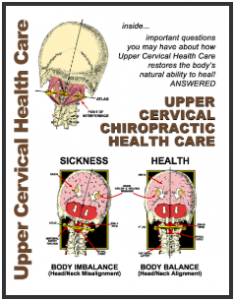A partnership for wellness
How three factors contribute to a patients return to health, and how important their role in their own recovery really is.
A message like this, helps patients understand what’s ahead in terms of treatment, and helps them understand how best to preserve fresh corrections/alignments to foster the healing process.
1. Your skill as an Upper Cervical doctor
The foundation of your corrective plan is rooted in reading, interpreting and understanding the patient’s X-rays. Have you shared the results of those pre-correction X-rays effectively with your patients, pointing out where the misalignment occurs, and what the corrected state should look like on an X-ray?
When reviewing X-ray results with patients, it’s an excellent time to remind them of how Upper Cervical Chiropractic painlessly manipulates only the top few vertebrae of the spine to achieve an alignment that brings on healing and to talk about what that is so effective.
- Do you demonstrate (with a model) how a correction works with an articulated atlas and axis?
- Do you take the opportunity to gently remind patients to be careful not to dislodge the new correction to give the body time to heal?
2. Complexity of the Misalignment
Some misalignments are much more difficult to correct and stabilize than others. Therefore, the doctor’s skill is of utmost importance.
Your patient needs to know that, and emphasize as well that each Upper Cervical correction is unique and specific to each patient – no two corrections are alike. And while the procedure may seem simple, the complexity and variety among misalignments make that customized alignment/correction a critical success factor.
That success depends entirely on your skill and the cooperation of the patient.
3. Patient Cooperation
Patients need to understand the purpose of the Upper Cervical Alignment Correction and “what they should and should not do” to help maintain and stabilize their correction for best results.
Patients need to understand that the success of the correction falls on their shoulders during the stabilization period.

A great way to reinforce that message is to use the page from “New Patient Guide Booklet” that discusses how to keep a new correction. That page titled “Use common sense to maintain your upper cervical alignment correction to prevent any interruption in the body’s natural self-healing process” is the perfect tool for that conversation. Use the booklet in your discussion with them, it’s ripe with simple explanations and images to reinforce your messaging and build on your doctor to patient relationship.
To help your patients remember how to maintain their correction and to give them a vehicle to help explain the work you do to peers and family, send them how with a pocket sized version of the booklet (item #0095) with your business card stapled into the inside back cover. It’s a powerful practice building tool.
